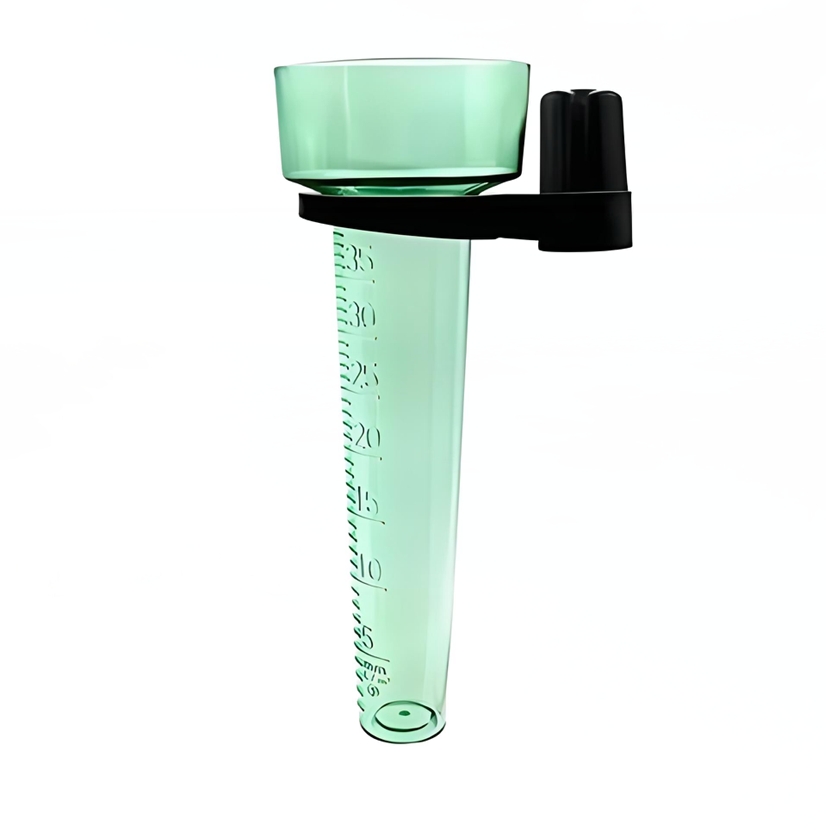

— Blogs —
—Products—
 Consumer hotline +8618073152920
Consumer hotline +8618073152920 WhatsApp:+8615367865107
Address:Room 102, District D, Houhu Industrial Park, Yuelu District, Changsha City, Hunan Province, China
Product knowledge
Time:2024-01-23 15:18:57 Popularity:7796
There are several types of rain gauges commonly used to measure rainfall:
1. Standard rain gauge: This is the most common type of rain gauge used for measuring rainfall. It consists of a funnel with a known area that collects rainwater and directs it to a measuring cylinder. The rainwater collected in the measuring cylinder is then measured using a graduated scale.

1.1 Standard rain gauge advantages:
- Simple and widely used: Standard rain gauges are simple in design and widely used, making them easily accessible and familiar to many people.
- Accurate measurement: They provide accurate measurements of rainfall when placed in an open area away from obstructions.
- Easy to read: The graduated scale on the measuring cylinder allows for easy reading of the rainfall amount.
2. Tipping bucket rain gauge: This type of rain gauge uses a bucket that tips over when a certain amount of rainwater is collected. The number of times the bucket tips over is counted electronically, and this is used to calculate the amount of rainfall.
2.1. Tipping bucket rain gauge advantages:
- High resolution: Tipping bucket rain gauges can provide high-resolution measurements by counting the number of tips, allowing for precise measurement of small amounts of rainfall.
- Self-emptying: After each tip, the bucket empties itself, preventing overflow and allowing continuous measurement without manual intervention.
- Durability: Tipping bucket rain gauges are designed to withstand harsh weather conditions and are less prone to damage.
3. Weighing rain gauge: This type of rain gauge measures rainfall by weighing the amount of water collected. The gauge consists of a container with a known weight that is placed on a scale. As rainwater collects in the container, the weight increases, and this is used to calculate the amount of rainfall.
3. 1 Weighing rain gauge advantages:
- Highly accurate: Weighing rain gauges offer high accuracy in measuring rainfall by directly weighing the collected water.
- Minimal evaporation loss: Since the water is contained within a closed system, evaporation losses are minimized, leading to more precise measurements.
- Suitable for heavy rainfall: Weighing rain gauges can handle heavy rainfall events without overflowing, ensuring accurate measurement even during intense storms.
4. Optical rain gauge: This type of rain gauge uses an optical sensor to detect the size and frequency of raindrops. The sensor sends a signal to a computer, which calculates the amount of rainfall based on the data received.
4.1 Optical rain gauge advantages:
- Non-intrusive measurement: Optical rain gauges do not require physical contact with the rainwater, providing non-intrusive measurements and minimizing any potential interference.
- Fast response time: They can detect raindrops almost instantaneously, allowing for real-time monitoring of rainfall intensity and patterns.
- Can measure different precipitation types: Optical rain gauges can differentiate between rain, drizzle, and snow, providing valuable data for meteorological analysis.
5. Acoustic rain gauge: This type of rain gauge uses sound waves to measure the size and frequency of raindrops. An acoustic sensor sends a signal to a computer, which calculates the amount of rainfall based on the data received.
5.1 Acoustic rain gauge advantages:
- Non-intrusive measurement: Similar to optical rain gauges, acoustic rain gauges do not require physical contact with the raindrops, making them non-intrusive and accurate.
- Can measure different precipitation types: Acoustic rain gauges can differentiate between different types of precipitation, such as rain, snow, and hail, providing valuable information for meteorological studies.
- High sensitivity: They can detect small raindrops and accurately measure their size and frequency, enabling precise estimation of rainfall amounts.

Each type of rain gauge has its advantages and disadvantages, and the choice depends on the specific application and accuracy requirements. The choice of a rain gauge can be based on factors such as accuracy requirements, resolution, ease of use and tolerance to environmental conditions.
NBL-W-ARS-Tipping-bucket-rain-gauge-instruction-manual.pdf
Related recommendations
Sensors & Weather Stations Catalog
Agriculture Sensors and Weather Stations Catalog-NiuBoL.pdf
Weather Stations Catalog-NiuBoL.pdf
Related products
 Combined air temperature and relative humidity sensor
Combined air temperature and relative humidity sensor Soil Moisture Temperature sensor for irrigation
Soil Moisture Temperature sensor for irrigation Soil pH sensor RS485 soil Testing instrument soil ph meter for agriculture
Soil pH sensor RS485 soil Testing instrument soil ph meter for agriculture Wind Speed sensor Output Modbus/RS485/Analog/0-5V/4-20mA
Wind Speed sensor Output Modbus/RS485/Analog/0-5V/4-20mA Tipping bucket rain gauge for weather monitoring auto rainfall sensor RS485/Outdoor/stainless steel
Tipping bucket rain gauge for weather monitoring auto rainfall sensor RS485/Outdoor/stainless steel Pyranometer Solar Radiation Sensor 4-20mA/RS485
Pyranometer Solar Radiation Sensor 4-20mA/RS485
Screenshot, WhatsApp to identify the QR code
WhatsApp number:+8615367865107
(Click on WhatsApp to copy and add friends)